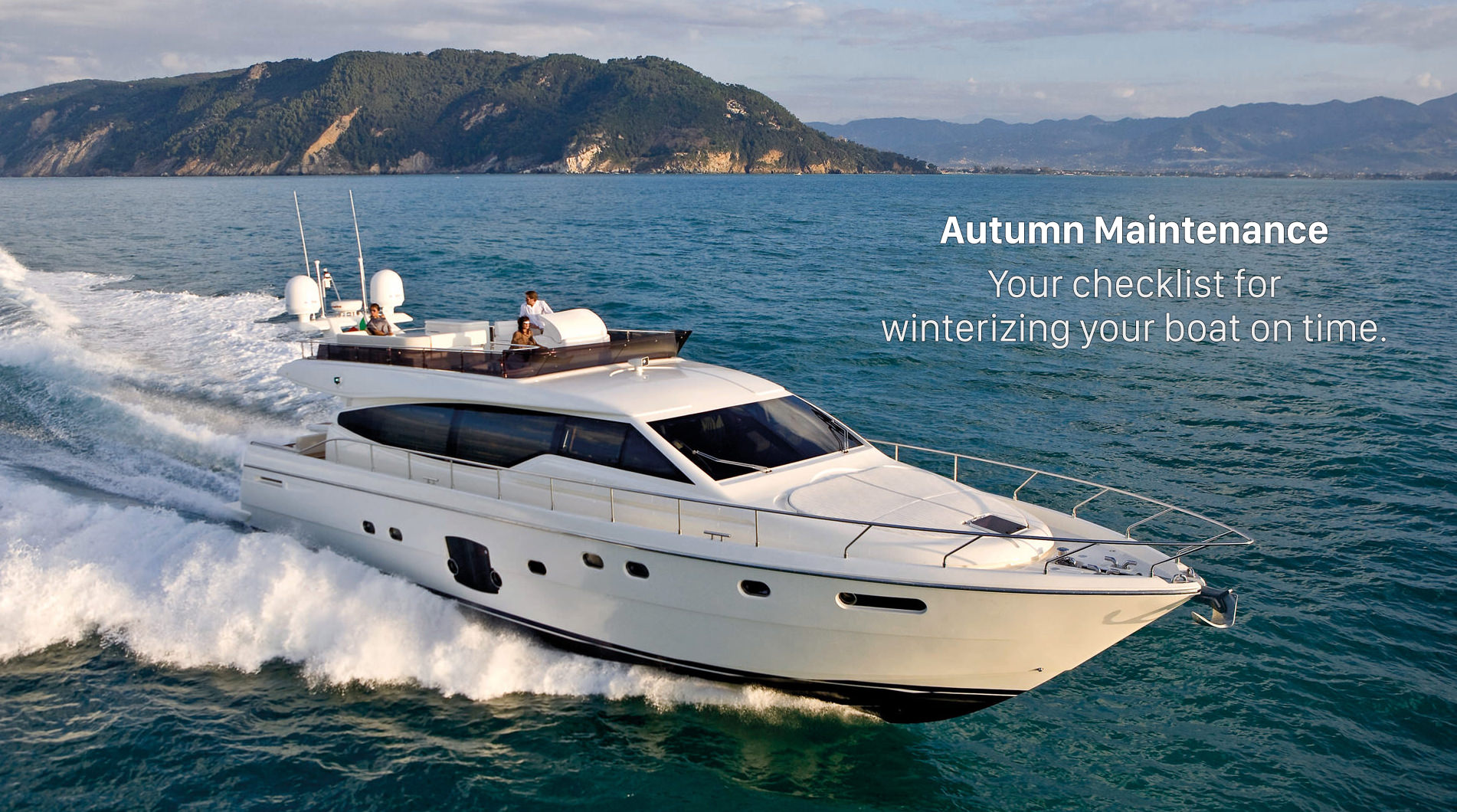
Back to School Means Winterizing Begins
Your autumn boat maintenance checklist.
Summer always goes by too fast. For many boaters, August hails the time of year when boating activity winds down. Even in the milder climate of the Pacific North West, autumn is when boaters look to prepare their boats for storage.
The main goal of winterization is to prevent colder temperatures from damaging the engine components, as well as ensuring water doesn’t freeze in pipes and waste systems. Winter weather elements can ruin the unprepped finishes on your hull, damage wood and brightwork.
Here are some things you can do during the beautiful summer weather to properly prepare your boat for autumn and winter:
- Make arrangements now to book your haul out, if storing it out of the water. Avoiding the rush of boaters reserving a trailer by scheduling your haul ahead of time. If you’re hauling out, inspect your trailer for wear or damage. Other arrangements should be made for boats kept in the water over the winter. (see below)
- Winterize mechanical systems including plumbing, sanitation, and your engine. Typically, this means leaving your boat with clean oil, stabilized fuel and a cooling system that’s either completely drained or filled with antifreeze. While you’re there, change filters and visually inspect any other mechanical or electrical components.
- Clean, remove, and stow canvas and Eisenglass panels at home. Remember to ensure canvas is completely dry and avoid using Windex on Eisenglass because the ammonia content will turn the clear plastic yellow and clouded.
- Secure and store tackle and gear. The weather can play havoc with unsecured deck tackle, and leaving tackle and gear topside all winter will speed its deterioration and bait thieves. Where possible, remove gear or stow inside.
- Clean the decks and topsides, then preserve it by having a pro shrink-wrap it. Shrink-wrapping provides amazing protection for your boat over the winter, and having it done professionally by a trained and insured technician keeps you safe as well. How? DIY kits won’t hold up should you need to file an insurance claim for any damage sustained over the winter.
- Store your batteries safely at home, and hook them up to a trickle charger to keep them topped up all winter. Removing batteries from the corrosive winter elements of your boat will prevent oxidisation. Remember to check electrolyte levels if you have lead-acid batteries.
Now you’re free to enjoy the rest of the boating season, and take advantage of the good weather to adequately prepare your boat for winter.
